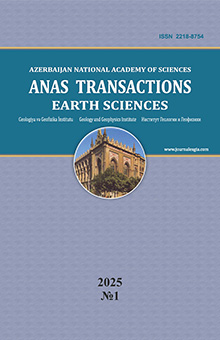№ 1,
2015
Download the article
Main indicators of the collisional geodynamics of Zagros-Caucasian segment of Mediterranean belt
Institute of Geology and Geophysics of Azerbaijan National Academy of Sciences, AZ1143, Baku, H.Javid av., 119, E-mail: rustamov-muxtar@rambler.ru
Summary
A-
A+
In the evolution of Meso-Thetys after the final closure of mosaic systems of the Zagros-Caucasian segment oceans during the stage of transition into Neo-Thetys through the late Senon (18-20Ma) there was observed a weakening of tectonicmagmatic and geodynamic processes as well as quite wide spreading of the carbonate shallow water basins that cover the segment. In the earth sphere, upper Senon and Paleocene border is characterized by the commencement in forming of superplumes flows in the global scale and drastic development of the spreading in the world oceans. As far as the global geodynamic polarity is concerned, the development of Neotethys and its Zagros-Tethys segment during Cainozoic period occurs in the circumstances of collisional geodynamics. The sudden emergence of the latter is determined by sharp changeover of the carbonate facies by the terrigen flysch (flish) sediments in the residual sags spread in the zone of interface between the internal plates along the ophiolites structure. In the new tectonic plan of the traced chain of riftogenic flysch (flish) troughs resulting from the manifestations of the paleogenic cycle of magmatism there are identified volcanic-plutonic rims (VVR). The roots of the multi-stage and multi-phase volcanism and embedment of the granitoids attributing exceptionally to the axial downthrown block and frontal rifts are forming the concentrated magmatism bond. The latter in the geological petrology is suggested as a new term and the peculiarities of its petrofund have great importance in resolving the problematic issues of collisional magmatism and geodynamics. The closure of marine basins by VVR, formation of the mature earth crust and sharp interjection of the internal plates is changed by the continent-continent collisional geodynamics. In the collisional geodynamics of the continents under the increased compression circumstances the fragmentation of the internal plates and activation transcontinental fault branches are accompanied by manifestation of volcanic cycle of Neogene-Quaternary. The paradox is in the fact that under the circumstances of increased compression the magmatism in each cycle is attributed to the stretching zones, i.e. the magma-tracing faults are identified in interaction the left and right sided movements of the plates (or the blocks of those) with the continuous activation of submeridianal fractures. The cinematic models of the aforesaid processes have been compiled. By the tendencies of the structural-spatial distribution of the magmatic cycles in the Cainozoic there have also been identified the migration in manifestation of the Paleogene cycle southward (Aden, Afar, Red sea) and formation of lesser Caucasian-Arabic hot mantic field. Characteristic for the Neogene-quaternary cycle is the migration of volcanism northward (Greater Caucasus, Pre-Caucasus) and southward (right up to eastern-African rift) with formation of the Caucasian-African hot field. According to the analysis of the literature on seismic-tomographic materials, the submeridianally extended hot mantic fields are caused by the linear diapirism of the superplume flows in the deep mantle.
